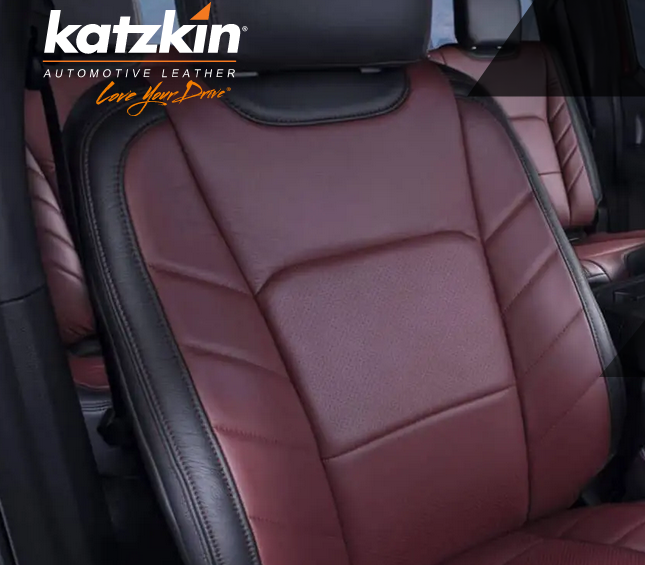What Car Seat Is After the Infant Seat?
Once your child outgrows the infant car seat, you might wonder what the next step is in their car safety journey. Many parents opt for a convertible car seat, which can serve both rear-facing and forward-facing positions. This change isn't just about moving on; it's essential for your child's safety and comfort. Understanding the right timing and features to look for can make a significant difference. But how do you know when it's time to switch, and what should you consider in a convertible seat? Let's explore.
Key Takeaways
- After the infant car seat, transition to a convertible car seat, which can be used both rear-facing and forward-facing.
- Convertible car seats are suitable for children from 5 lbs up to 65 lbs, depending on the model.
- Look for signs of readiness, like sitting up independently, typically between 9 months and 2 years.
- Extended rear-facing is recommended for better crash protection until the child reaches the weight limit of the seat.
- Always follow the manufacturer's guidelines and local laws for safe car seat usage and transitions.
Understanding Car Seat Stages
When it comes to car seat safety, understanding the different stages is vital for your child's protection. Car seat categories are divided into several stages, each designed to accommodate your child's growth and enhance their safety.
Initially, you'll start with an infant car seat, which is rear-facing and suitable for newborns and infants up to around 30 pounds.
Once your child outgrows this stage, you'll shift to a convertible car seat. These seats can be used in both rear-facing and forward-facing positions, adapting as your child grows.
After that, you may use a booster seat, which elevates your child to guarantee proper seatbelt placement.
Each of these stages plays an important role in child safety, as they provide the necessary support and protection suited to your child's age and size.
Remember, it's not just about moving to the next car seat category; it's about making sure that your child remains safe throughout their development.
Always consult the car seat manufacturer's guidelines and local laws to make informed decisions about your child's safety.
When to Transition
Knowing when to move to the next car seat is vital for your child's safety. The change age for moving from an infant seat to a convertible car seat typically falls between 9 months and 2 years, depending on your child's growth milestones.
Pay attention to both their weight and height, as most infant seats have specific limits. When your little one exceeds these limits, it's time to make the change.
Additionally, look for signs of readiness. If your child can sit up independently, that's a good indicator they're ready for a convertible seat.
Remember, keeping your child in the rear-facing position for as long as possible is important, as this provides better protection in the event of a crash.
Don't rush the change. Each child develops at their own pace, so it's important to assess their individual growth milestones rather than following a strict timeline.
Always refer to the car seat manufacturer's guidelines for weight and height limits, ensuring you're making the safest choice for your child.
Types of Convertible Car Seats
Once you've determined it's time for a convertible car seat, you'll find several types to choose from, each designed to accommodate your child's growth and safety needs. Convertible car seats can be used in both rear-facing and forward-facing positions, adapting to your child's age and size. Here's a quick overview of the main types:
| Type | Key Features | Best For |
|---|---|---|
| All-in-One Seats | Shifts from rear-facing to forward-facing and booster seat | Infants to big kids |
| Combination Seats | Starts as a forward-facing seat and converts to a booster seat | Toddlers to school-age children |
| Extended Rear-Facing Seats | Allows rear-facing use for longer, often up to 50 lbs | Families prioritizing safety |
Understanding these convertible car seats helps you choose the right option for your child. Each type caters to different needs, whether you're looking for longevity or specific booster seat types. Make certain you consider your child's size and weight when selecting the best seat. This investment in their safety guarantees peace of mind during every trip.
Benefits of Forward-Facing Seats
Shifting to a forward-facing car seat marks an exciting milestone in your child's development and offers several benefits. One of the primary forward-facing advantages is the improved comfort and space your child experiences. As they grow, they'll appreciate the roomier seating position, which allows them to sit upright and enjoy the ride more.
Another key benefit is enhanced visibility. Your little one can now see outside the car, making road trips more engaging and fun. They'll be able to spot passing cars, animals, and scenery, which can turn a mundane drive into an adventure. This newfound ability to see what's happening around them can also help reduce feelings of confinement that some children experience in rear-facing seats.
Additionally, moving to a forward-facing seat often means your child can interact more easily with family members in the front seat, fostering a sense of connection during travels. This interaction can also help keep them entertained, reducing the likelihood of fussiness on longer trips.
Safety Features to Consider
When you're selecting a car seat after the infant stage, it's crucial to take into account safety features that truly matter.
Look closely at harness system options, side impact protection, and the importance of safety ratings to guarantee your child's well-being.
These factors can greatly enhance your peace of mind while on the road.
Harness System Options
Choosing the right harness system for your child's car seat is essential for their safety and comfort. There are various harness types you can choose from, each with different installation methods. The two main types are five-point harnesses and adjustable harnesses, and both offer unique advantages.
Here's a helpful comparison to guide you:
| Harness Type | Installation Method |
|---|---|
| Five-Point Harness | LATCH or seatbelt |
| Adjustable Harness | LATCH, seatbelt, or ISOFIX |
| Combination Seat | LATCH or seatbelt |
| Booster with Back | LATCH or seatbelt |
| Booster without Back | Seatbelt only |
Five-point harnesses secure your child at the shoulders and hips, distributing crash forces more evenly. Adjustable harnesses can grow with your child, making them a versatile choice.
When selecting a harness system, consider how easy it is to install and adjust. You'll want to guarantee that you can fit it securely in your vehicle. Always follow the manufacturer's instructions for installation methods to assure maximum safety. Your child's comfort and your peace of mind are paramount, so take time to choose wisely.
Side Impact Protection
As your child moves from an infant seat to a forward-facing car seat, side impact protection becomes an essential safety feature to take into account.
You want to verify that the car seat you choose has effective side impact design to help safeguard your little one during a collision. Many manufacturers conduct impact testing to evaluate how well their seats perform in side-impact scenarios, and this information can guide your decision-making process.
When considering side impact protection, look for these key features:
- Energy-absorbing foam: This material helps absorb the force of an impact, reducing the stress on your child's body.
- Reinforced side wings: These provide additional protection for your child's head and torso, keeping them secure during a side collision.
- Adjustable headrest: An adjustable headrest can help verify proper positioning, further enhancing safety by reducing the risk of head injuries.
Safety Ratings Importance
Understanding safety ratings can considerably impact your decision when selecting a forward-facing car seat. These ratings provide crucial information about how well a car seat performs in crash tests and other safety evaluations. When comparing options, look for car seat certifications that indicate compliance with established safety standards. The National Highway Traffic Safety Administration (NHTSA) and other organizations conduct rigorous testing, and their findings can guide you toward the safest choices.
You'll want to pay attention to the details of these safety ratings. A high rating often reflects superior design features, such as energy-absorbing materials and improved harness systems.
Furthermore, consider user reviews and expert recommendations, as real-world experiences can highlight any potential concerns not captured in testing.
Moreover, remember that a car seat's safety isn't just about ratings; it's also about proper installation and usage. An improperly installed seat, regardless of its safety ratings, can put your child at risk.
Installation Tips and Guidelines
When it comes to installing a car seat after shifting from an infant seat, following the manufacturer's guidelines is vital. Proper installation techniques not only guarantee your child's safety but also make it easier for you in the long run.
Here are some tips to keep in mind:
- Read the manual: Familiarize yourself with the specific instructions for your car seat model. Each seat may have unique requirements.
- Check for tightness: After installation, verify that the seat doesn't move more than an inch side to side or front to back. A secure fit is essential.
- Use the correct harness: Adjust the harness straps to fit snugly across your child's shoulders, making sure the buckle is at their chest level.
Avoiding common pitfalls can make the installation process smoother. For instance, don't skip the tether strap if your seat has one; it provides extra stability.
Furthermore, confirm that the car seat isn't placed on a vehicle seat that's reclined too much. By following these tips, you'll be well on your way to a safe and secure car seat installation, giving you peace of mind on the road.
Common Mistakes to Avoid
Even with proper installation, it's easy to make mistakes that can compromise your child's safety in a car seat. One common misconception is thinking that you can shift your child to a forward-facing seat too early. Always check the weight and height limits specified by the manufacturer and follow the shift timeline suggested by safety experts.
Another mistake is neglecting to use the harness correctly. Make certain the straps are snug and the chest clip is at armpit level. Loose straps can lead to serious injuries in a crash.
Furthermore, don't forget to adjust the car seat to your child's growth. As they grow, you should regularly check the fit and make necessary adjustments.
Many parents also overlook the importance of the car's seating position. The safest spot for a car seat is typically in the back center, away from active airbags.
Finally, confirm you're following the car seat's manual closely; it contains specific instructions that are essential for safety. By being aware of these common mistakes, you can guarantee your child remains safe during every ride.
Frequently Asked Questions
Can I Use a Used Convertible Car Seat?
You can use a used convertible car seat, but check for safety standards compliance and verify it's not expired. Follow installation tips carefully to guarantee your child's safety during every ride. Always prioritize safety first!
What Is the Weight Limit for a Convertible Car Seat?
The weight limit for a convertible car seat varies, but most accommodate children from 5 to 40 pounds rear-facing and 20 to 65 pounds forward-facing. Always check the car seat features and safety ratings for specifics.
How Long Can My Child Stay in a Car Seat?
You can keep your child in a car seat safely until they reach the weight limit or height limit. Shift tips include checking for snug fits, ensuring harnesses secure, and monitoring growth for safety.
Do All Convertible Car Seats Fit All Vehicles?
Not all convertible car seats fit all vehicles. You need to check car seat compatibility with your specific vehicle for ideal safety. Always read the manufacturer's guidelines to guarantee a secure and safe fit.
What Should I Do With Expired Car Seats?
Did you know 90% of parents unknowingly use expired car seats? When disposing of an expired car seat, consider car seat recycling programs that safely break them down, preventing harmful materials from ending up in landfills.
Conclusion
Shifting from an infant car seat to a convertible car seat is like moving from training wheels to a two-wheeler—exciting yet essential for safety. By understanding the stages, knowing when to switch, and recognizing the types of seats available, you guarantee your child's safety on the road. Always check weight and height limits, and follow installation guidelines closely. With the right convertible car seat, you're not just adapting to growth; you're prioritizing your child's well-being every step of the way.
- Can I Get in a Taxi Without a Car Seat? - January 26, 2025
- Can I Get Chlamydia From a Toilet Seat? - January 26, 2025
- Can I Get an Uber With a Car Seat? - January 26, 2025






